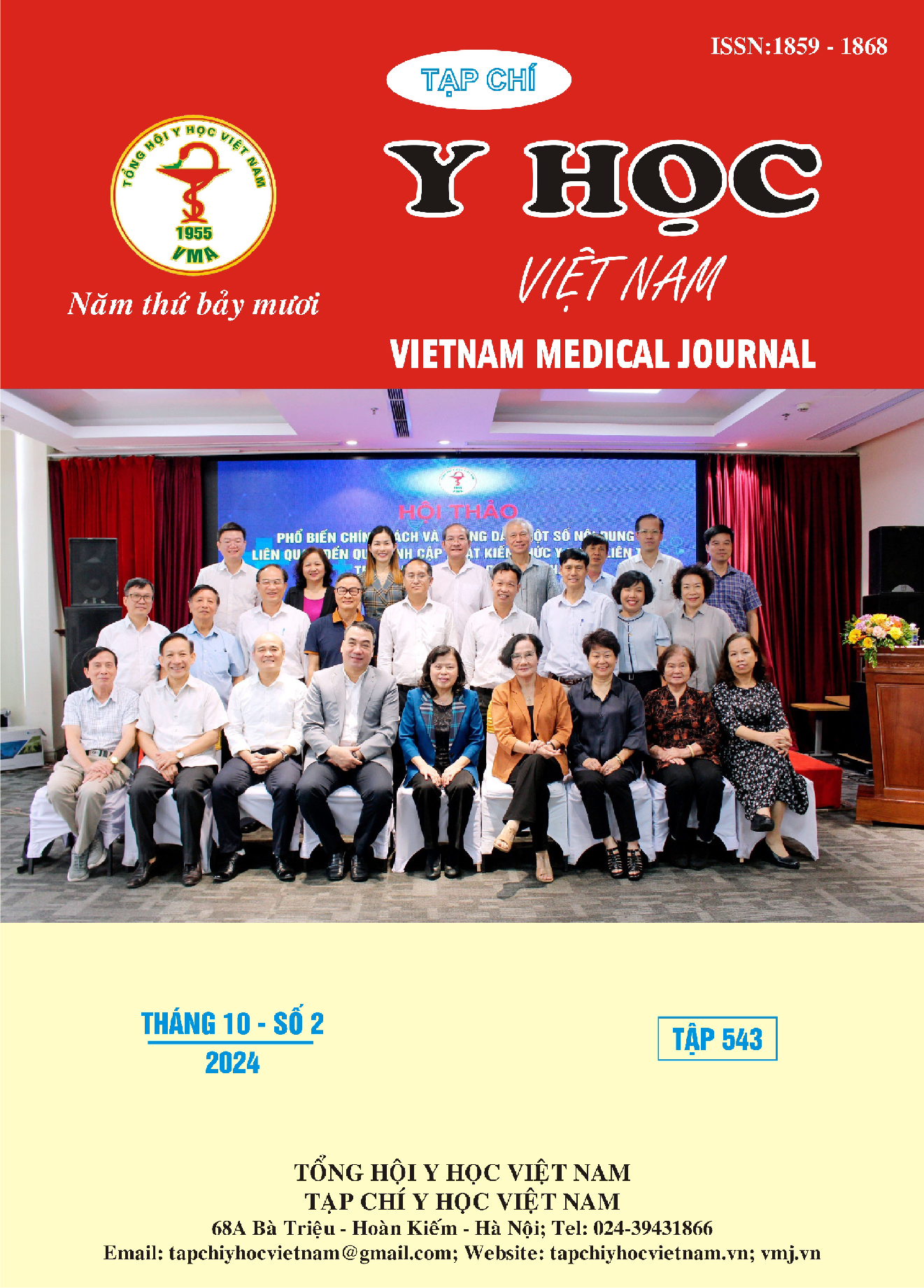THE OUTCOMES OF THE SURGICAL TREATMENT FOR LOWER LIMBS ISCHEMIA DUE TO AORTA-ILIAC OCCLUSIVE DISEASES AT VIET DUC UNIVERSITY HOSPITAL DURING THE PERIOD FROM 2015 TO 2023
Main Article Content
Abstract
Purpose: To evaluate the surgical outcomes in the treatment of aorta-iliac occlusive diseases (AIOD) at Viet Duc University Hospital during the period of 2015 to 2023. Patients and methods: This was a retrospective descriptive study of patients with chronic lower limb ischemia due to AOID who underwent surgical treatment at Cardiovascular and Thoracic Center, Viet Duc University Hospital, from January 2015 to May 2023. Results: There were 60 patients included in the study. Male accounted for 95,0% of the patients, with an average age of 64.6 ± 9.0 years. Among them, 30(50,0%) had a history of smoking, and 29(48.3%) had hypertension. Claudication was the main reason for hospital admission in 86.7% of patients. 39 (65,0%) patients were in stage III and 21 (35,0%) in stage IV ischemia. All patients underwent MSCT angiography to conform diagnosis. Aorto-bifemoral bypass using synthetic grafts was the most frequently performed procedure, conducted in 45 (75,0%) patients. There were 3 (5,0%) deaths within 30 days post-surgery. Overally, postoperative ischemic symptoms showed significant improvement. Conclusion: The majority of patients with chronic lower limb ischemia due to AIOD are male (95,0%), elderly, with a history of smoking and hypertension. Patients often present to the hospital late, and MSCT angiography is an important diagnostic method. Surgical interventions yield good outcomes
Article Details
Keywords
Aorto-iliac occlusive disease, Chronic lower limb ischemia, Viet Duc University Hospital.
References
2. Brewster DC. Current controversies in the management of aortoiliac occlusive disease. Journal of Vascular Surgery. 1997;25(2):365-379.
3. Ahmed S, Raman SP, Fishman EK. CT angiography and 3D imaging in aortoiliac occlusive disease: collateral pathways in Leriche syndrome. Abdom Radiol. 2017;42(9):2346-2357.
4. Statement on ASA Physical Status Classification System. Accessed June 18, 2024.
5. Choudhry AJ, Shaw PM. Endovascular Aorto-Iliac Reconstruction vs. Aortobifemoral Bypass as First Choice for a Durable Revascularization for Aorto-Iliac Occlusive Disease. Vasc Endovascular Surg. 2023;57(1):88-92.
6. Sharma G, Scully RE, Shah SK, et al. Thirty-year trends in aortofemoral bypass for aortoiliac occlusive disease. Journal of Vascular Surgery. 2018;68(6):1796-1804.e2.
7. Rocha-Neves J, Ferreira A, Sousa J, et al. Endovascular Approach Versus Aortobifemoral Bypass Grafting: Outcomes in Extensive Aortoiliac Occlusive Disease. Vasc Endovascular Surg. 2020;54(2):102-110.
8. Allen AJ, Russell D, Lombardi ME, et al. Gender Disparities in Aortoiliac Revascularization in Patients with Aortoiliac Occlusive Disease. Ann Vasc Surg. 2022;86:199-209.
9. Vries SO de, Hunink MGM. Results of aortic bifurcation grafts for aortoiliac occlusive disease: A meta-analysis. Journal of Vascular Surgery. 1997;26(4):558-569.


